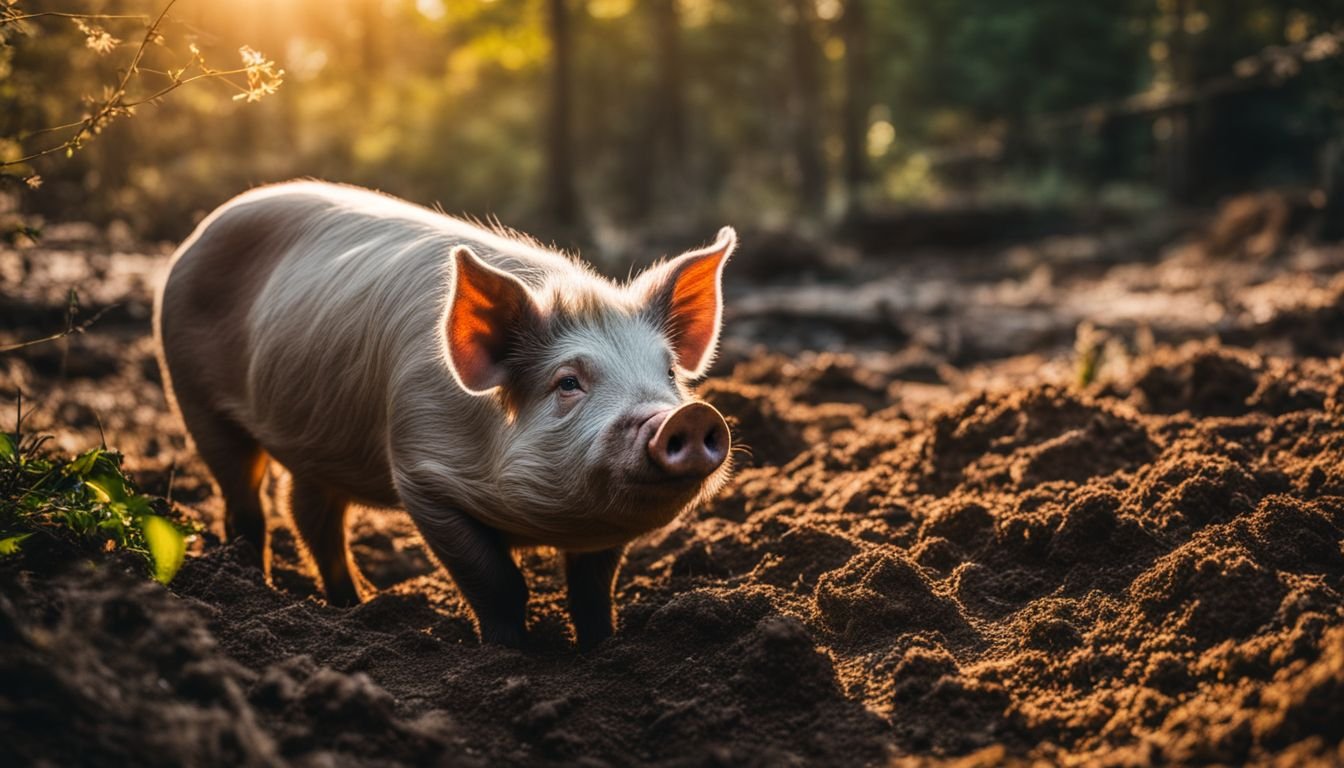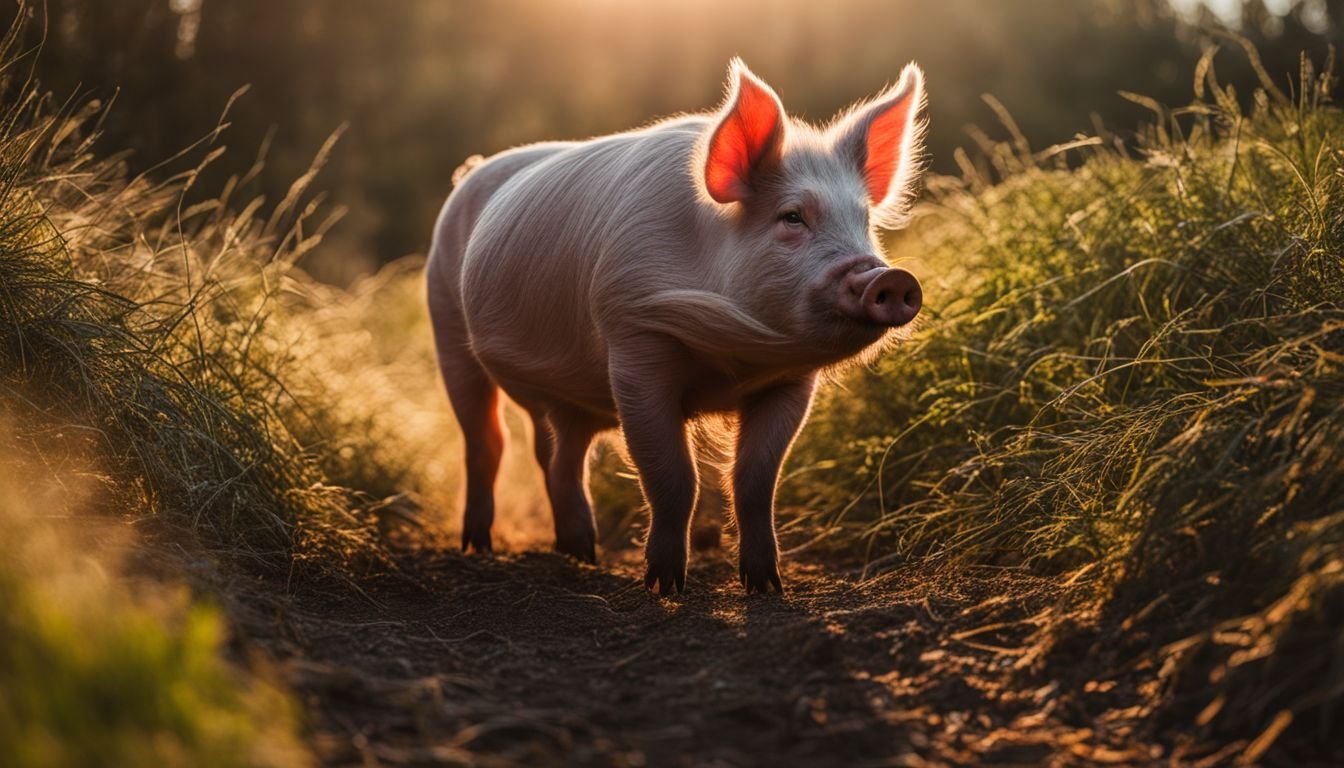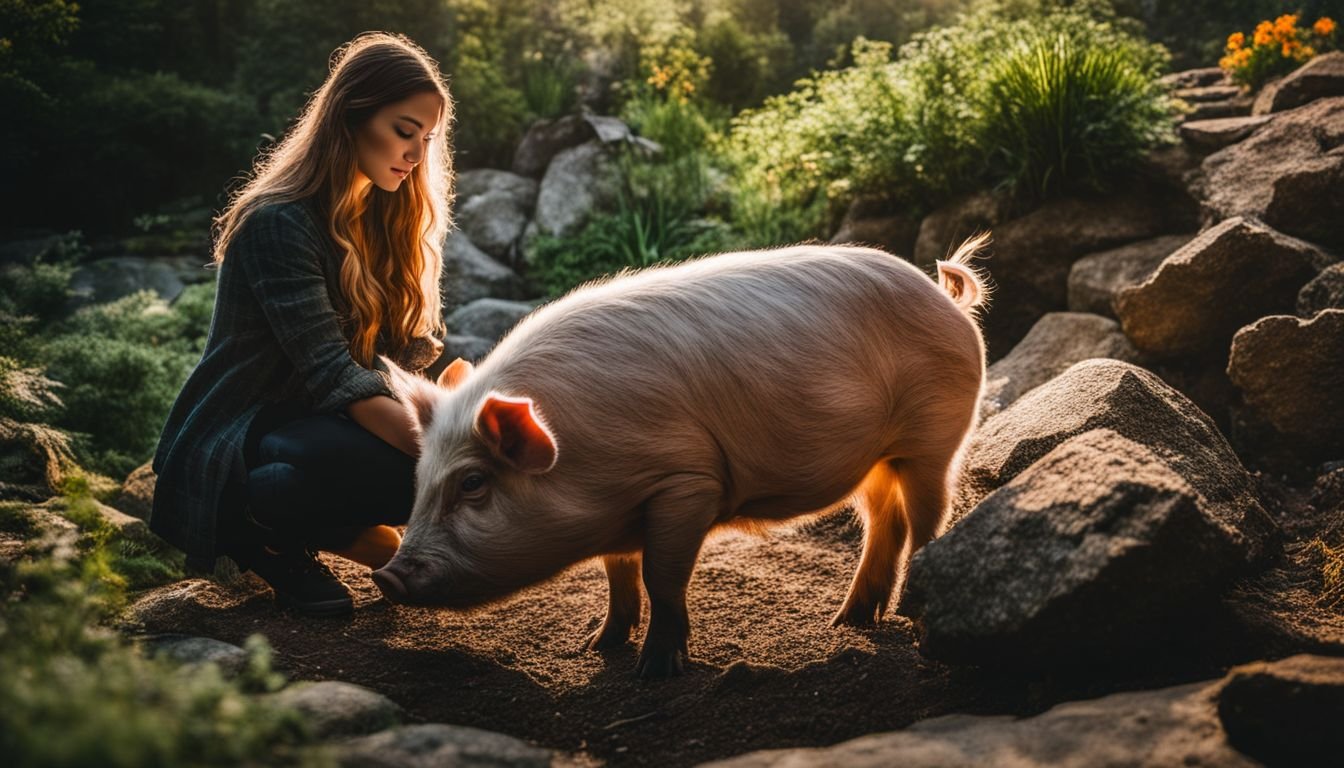Have you noticed your Pig Face plant looking a bit under the weather lately? You’re certainly not on your own. Many of us find ourselves scratching our heads, trying to keep these vibrant plants in tip-top shape, and it can be a real puzzle figuring out just what they need.
We know exactly how you feel, so we’ve delved deep into the world of Carpobrotus glaucescens (that’s Pig Face to you and me) to discover the best ways to look after them. With over 30 species spread across South Africa and Australia, this hardy succulent injects life and colour into gardens with its daisy-like blooms.
Our guide runs through all the must-know details: from setting up the ideal spot for your plant in rockeries or hanging baskets, navigating common hurdles like root rot due to too much water, making sure they bask in just enough sun, right down to propagating new Pig Faces from stem cuttings.
Whether you’re facing some troubles or simply wanting your garden to burst with colour all year round, we’ve collected a bunch of tips that’ll get your garden flourishing.
No worries if gardening doesn’t come naturally – we’ve laid it all out for you here. Ready for a lush garden?
Key Takeaways
- Pig Face plants need full sunlight and well – drained soil to flourish. Putting them in sunny spots and ensuring the soil doesn’t hold water too long helps keep them healthy.
- Pruning is important during the cooler months. Trimming back these succulents in winter encourages lush growth come spring, making your garden vibrant.
- Watch out for too much watering as it can lead to root rot. Ensure you only water when the soil feels dry on top and improve drainage to prevent excess moisture around roots.
- You can easily grow new Pig Face plants from stem cuttings. Just choose a healthy stem, let it callous over a few days, then plant in well-drained soil.
- Keeping your Pig Face plant healthy also involves guarding against snails which can harm young cuttings or plants.
Essentials for Pig Face Plant Care

Caring for your Pig Face Plant starts with knowing the right spot and soil. They love sunny places and need soil that lets water through easily.
Ideal Climate
Pig Face plants thrive in a range of climates, but they love the sun the most. They grow best in places where the air is cool to sub-tropical. We make sure our gardens offer full sunlight because these hardy succulents need plenty of it to flourish.
Our rock gardens and sandy soils provide just the right home for them, making sure they’re happy.
Good drainage is crucial for these plants since waterlogged roots are a big no-no. We always check that our soil isn’t holding on to water longer than necessary. In areas with heavier soil, we mix in some coarse sand or opt for raised beds and containers filled with potting mix designed for succulents.
This ensures that even after heavy rains, their roots stay dry.
Watering habits change with the seasons; during warmer months like spring and summer, we wait until the top layer of soil feels dry before giving them more water. Pruning also becomes part of our winter routine to help encourage dense growth when warmer weather rolls around again.
By keeping up with these simple care steps, we can enjoy vibrant blooms and lush foliage from our Pig Face plants all year round.
Soil Preparation and Drainage
After learning about the ideal climate for your Pig Face plant, let’s move on to soil preparation and drainage. For these salt-tolerant wonders to thrive, we need to ensure their roots can breathe and not stay wet for too long.
Start with choosing the right kind of soil – sandy or rocky grounds work best for them. These types allow water to flow freely without holding onto moisture too much.
We also focus heavily on improving drainage in areas where our plants will live. Mixing organic mulch into your garden beds helps prevent compacting of the earth and encourages proper water movement.
Creating slight slopes in the planting area directs water away from plant bases, keeping their feet dry and happy.
Planting in raised beds is another great strategy for promoting good drainage. This method lifts the roots above any potential water-logged spots in your garden, offering an extra layer of protection against root rot—a common issue we want to avoid at all costs.
Pruning and Maintenance
Once you’ve got the soil prepared and ensured good drainage for your Pig Face plant, it’s time to focus on keeping it in top shape. Pruning plays a key role here, especially during the cooler months.
We trim back our plants in winter to encourage vibrant growth come spring. This practice isn’t just about keeping your garden looking neat; it also helps the plant conserve energy and directs growth where it matters most.
Pig Face plants are known for being tough—they’re salt and wind tolerant, fitting perfectly into child-friendly gardens thanks to their drought-tolerant nature. Even so, they benefit greatly from a bit of care.
Keep an eye on them and prune as needed to remove any dead or dying parts. This not only makes more room for healthy growth but also prevents diseases from taking hold. And don’t forget, watering these hardy fellas should only happen when the soil feels dry to touch.
A sprinkle of slow-release native fertiliser in spring and autumn will keep them happy too.
“A little pruning goes a long way in bringing out the best in your Pig Face plants.”
Understanding and Managing Common Pig Face Plant Problems

Pig Face Plants can face troubles like too much water leading to root decay and not getting enough sun. We’ll show you how to spot these issues early and fix them, keeping your plant strong and healthy.
Over-watering and Root Rot
Over-watering our pig face plants can lead to a serious issue known as root decay. This happens because the plant’s roots sit in too much water and start to break down, losing their ability to take up nutrients and moisture from the soil.
We need to ensure that we give them just enough water, making sure not to drown them. Good drainage plays a vital role here; it helps excess water flow away, keeping the roots healthy and happy.
Pruning during the cooler months also assists in preventing root decay. Cutting back the plant helps reduce its water needs at a time when it’s not growing much. This simple step can make a big difference, helping us avoid over-watering.
If we notice signs of decay like yellow leaves or a mushy base, acting quickly is crucial. Removing affected parts of the plant and ensuring proper soil drainage might save it before it’s too late.
Always checking our plant’s moisture level before watering again will keep those dreaded soggy conditions at bay.
Inadequate Sunlight
Pig Face plants thrive in full sun, making them perfect for Australian gardens known for their sunny days. They love bathing in sunlight to show off vibrant flowers and produce tasty berries.
Without enough light, these hardy plants struggle. They grow weak, with long stems reaching out for any light source. This makes them less visually appealing.
“A Pig Face plant without adequate sunlight is like a beach day without the sun – lacking vibrancy.”
Not getting enough sunlight affects more than just the plant’s looks; it impacts its health too. A lack of bright light makes Pig Face more likely to fall victim to pests or diseases.
Their natural salt tolerance and drought resistance help them survive in tough conditions, but dims lights can rob them of their strength and reduce the quantity of edible berries they bear.
We aim to keep our gardens healthy by ensuring each plant gets the rays it deserves.
Propagating Pig Face Plants from Stem Cuttings
We can easily grow new Pig Face plants from stem sections. This method works well in Australia’s climate, especially during the warmer months of spring and summer. Here’s how we do it:
- Choose a healthy stem to cut. Look for one with several nodules where leaves join the stem. This spot is good for growth.
- Use a clean, sharp blade to make your cutting. A precise cut helps prevent infection and encourages healthy growth.
- Cuttings should be about 10 – 15 cm long. This length is ideal for handling and planting.
- Let the cut end dry out and form a hard layer, or callous, over a few days. This step is crucial for preventing rot.
- Prepare pots with well-drained sandy or rocky ground mix, perfect for these salt-tolerant plants.
- Plant the calloused stem cutting into the soil mixture, making sure a few nodes are buried where roots can sprout.
- Water the new plant sparingly until it shows new growth, indicating it has rooted well.
- Provide plenty of sunlight but protect it from extreme midday heat that could scorch young plants.
- Watch out for snails which find young cuttings very tasty and can harm them.
By following these steps, we ensure our newly propagated angular sea figs get the best start possible in our gardens or outdoor spaces, thriving as drought-tolerant beauties native to our Australian landscapes.
Conclusion
Caring for your Pig Face plant down under means giving it sunlight, well-drained soil, and not too much water. These succulents thrive with a bit of neglect, making them perfect for gardeners at any level.
By pruning in the cooler months and keeping an eye out for snails, you’ll ensure vibrant growth come spring. Propagating from stem offshoots lets your garden bloom with colorful daisy-like flowers without much fuss.
So go ahead, add some Pig Face to your outdoor space; they’re tough, beautiful, and uniquely Aussie.
For More Tips on Caring for Australian Native Plants
Exploring the world of Australian native plants opens doors to a diverse garden. These plants, from salt and wind-resistant seaside daisies to drought-tolerant bottlebrushes, bring unique beauty and resilience to your outdoor space.
We find joy in sharing knowledge on how best to care for these locals, ensuring they thrive in our gardens. From selecting the right soil mix that mimics their natural habitat to understanding their watering needs during hot summers, every bit of advice helps in creating a flourishing native plant oasis.
We also encourage experimenting with propagation techniques suited for various species. Taking cuttings or seeds from hardy shrubs like wattles can be an exciting way to expand your garden without much expense.
Joining local gardening clubs or forums brings additional tips and tricks into your gardening journey, allowing you to connect with fellow enthusiasts who have firsthand experience in nurturing Australia’s green gems.
FAQs
1. Is the pig face plant tolerant to salty conditions?
Yes, the pig face plant is salt tolerant, making it perfect for gardens near the sea in Australia.
2. Can pig face plants survive long periods without water?
Absolutely, they are drought tolerant and can thrive even when water is scarce.
3. How often should I water my pig face plant?
Since these plants are drought tolerant, they don’t need much water. Just give them a drink when the soil feels dry to the touch.
4. Will my pig face plant do well in any type of soil?
Pig face plants aren’t picky about soil but prefer it a bit sandy. This helps with their salt tolerance and suits their natural habitat.
